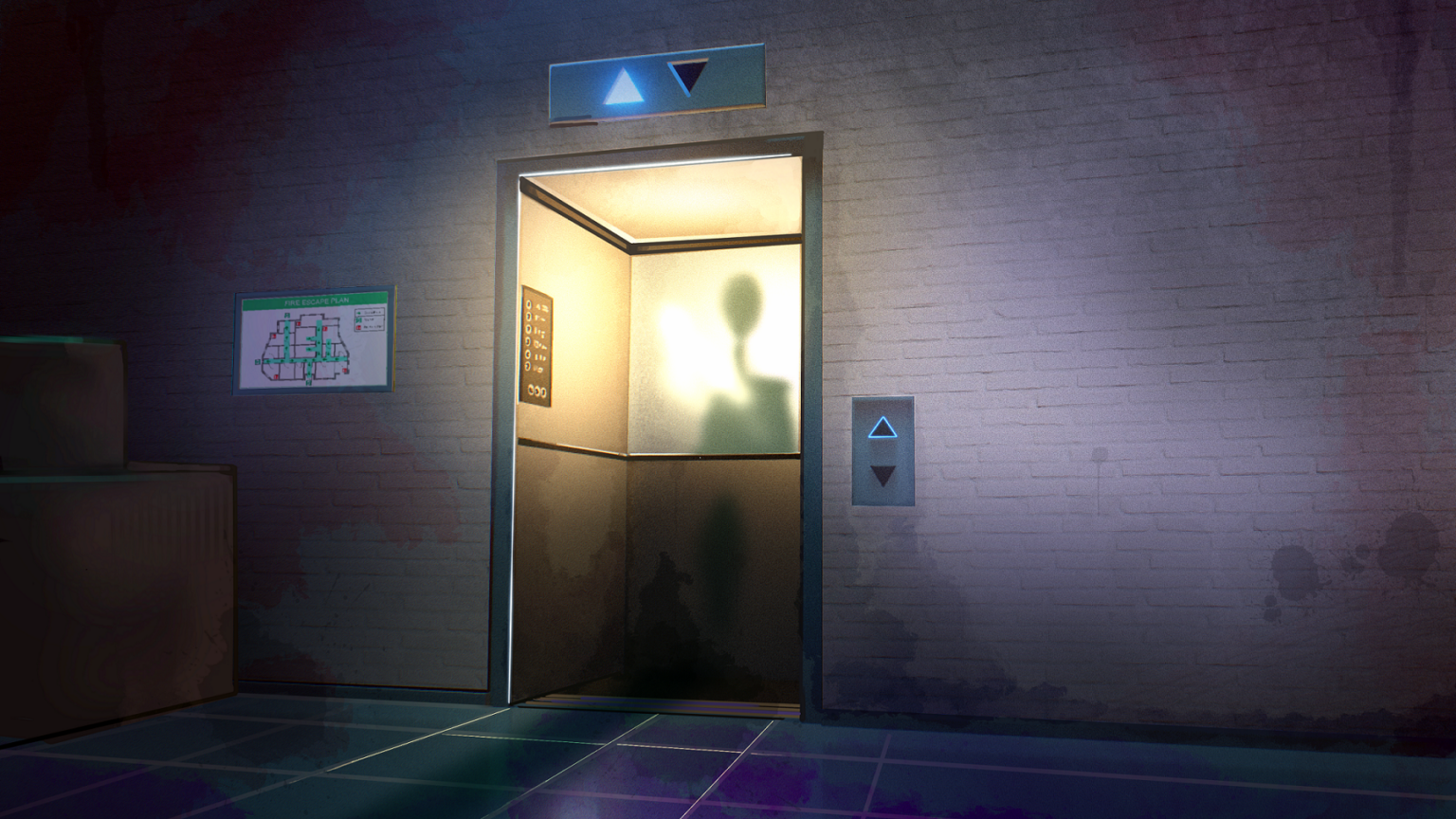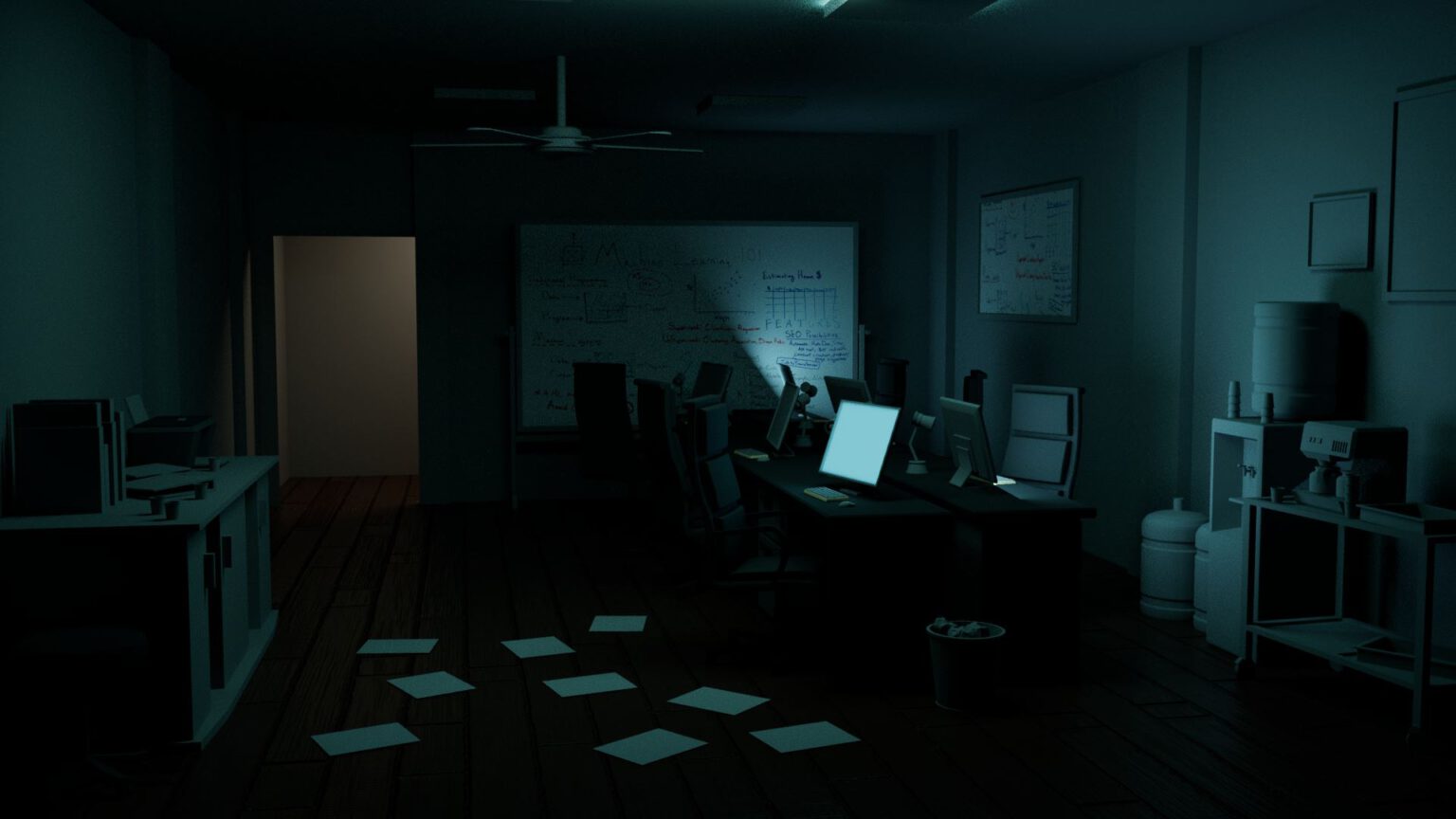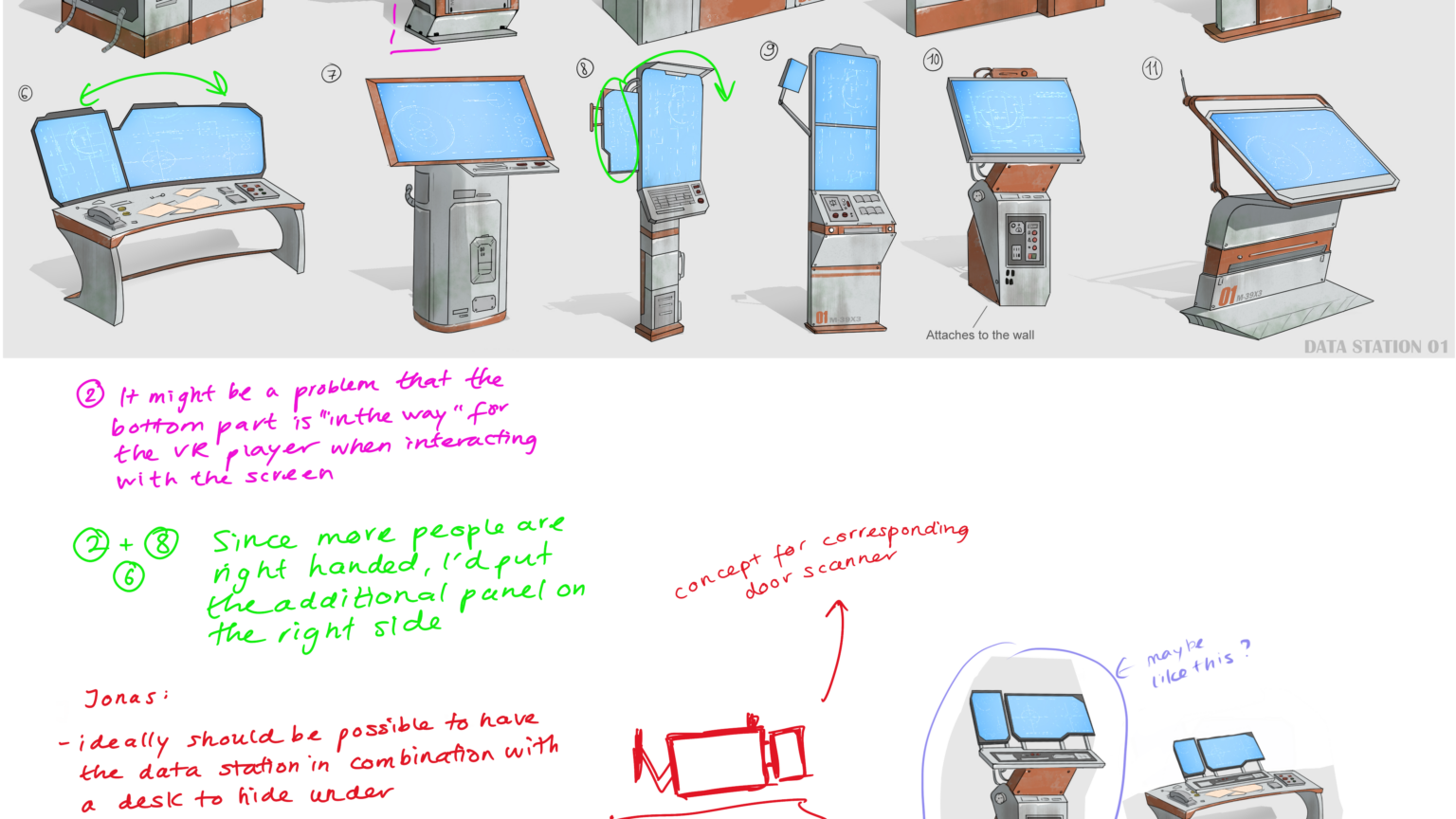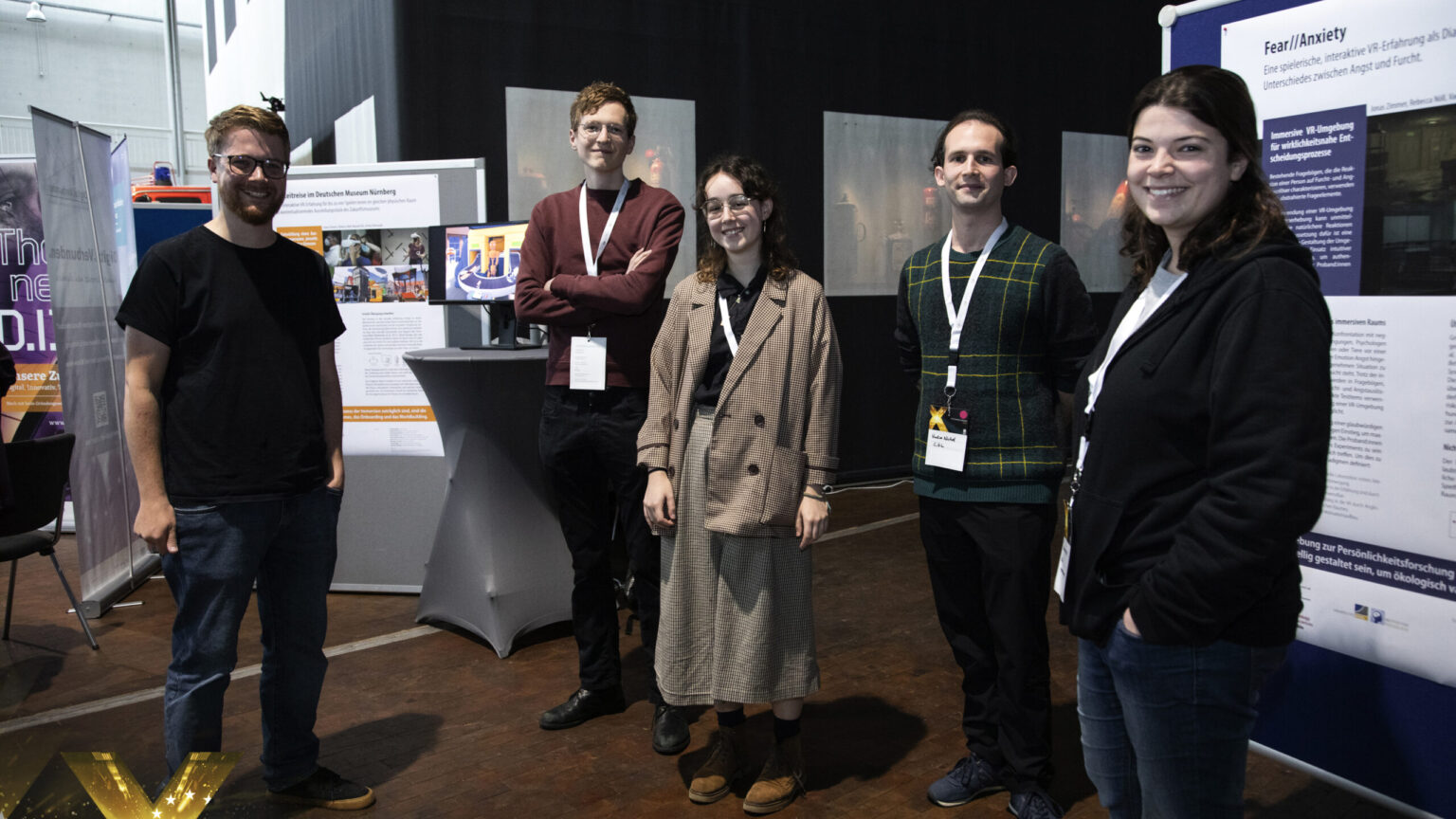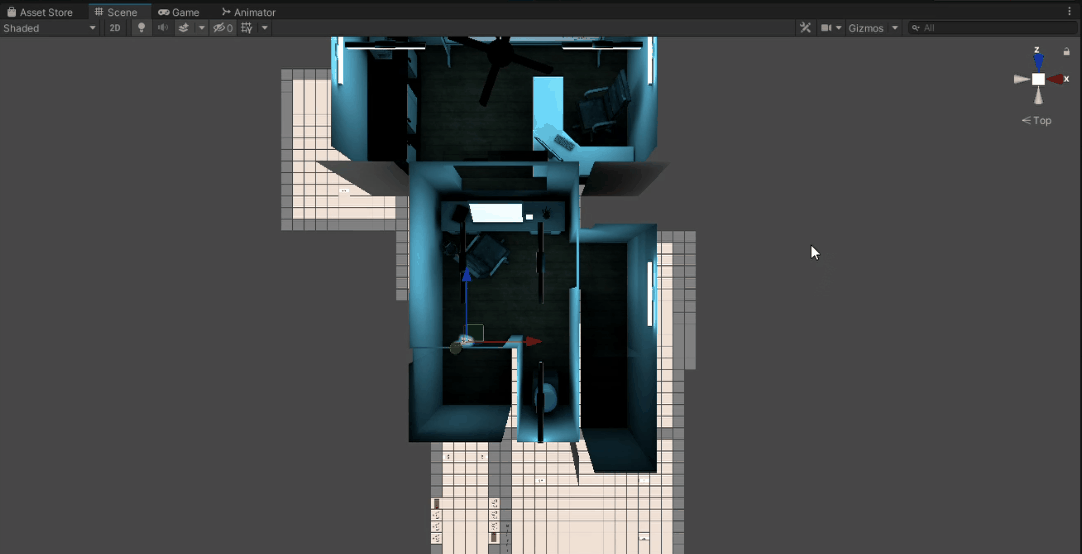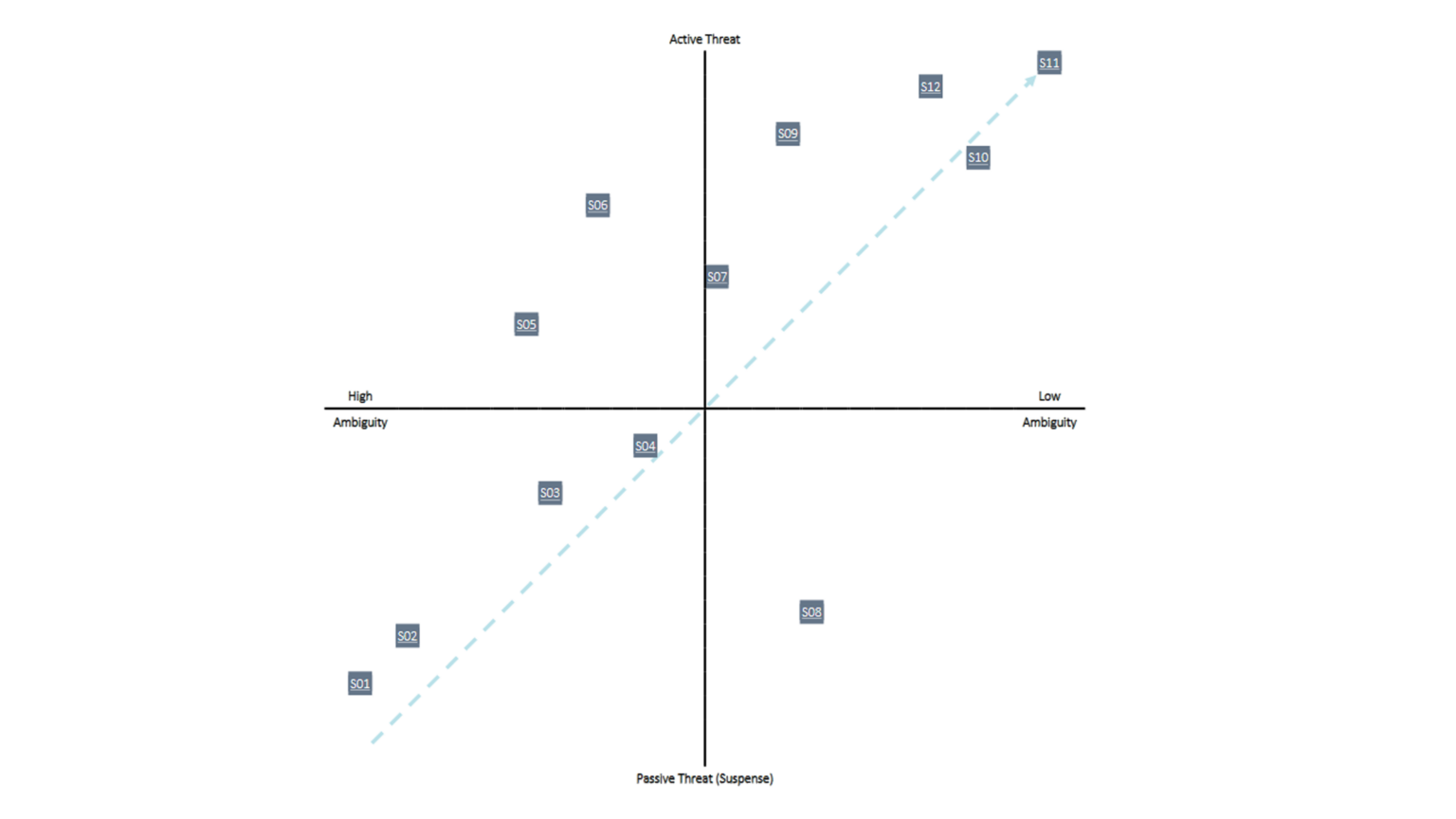research project // in development
Fear // Anxiety
Experimental Setup in VR for psychological research (Unity)
In cooperation with the University of Bonn, this project aims to provide psychologists with a tool to evaluate the difference between fear and anxiety in participants. The project won the XR Science Award for Best Practice in 2022.
Since the app is still in development, there is no representative footage available yet.
FACT SHEET
- Type Research Project
- Genre Horror
- Tools Unity, GitHub
- Platform Android (Oculus Quest 2)
- Time in project 6 months
- Team Jonas Zimmer, Vadim Nickel, Arthur Kehrwald, Noa Marcon
KEY ACCOMPLISHMENTS
- Basing game design on current psychological research
- Creating gameplay situations that can be scientifically evaluated
- Designing levels to create believable non-Euclidean spaces
LINKS
THE PROJECT
In cooperation with Prof. Dr. Dipl. Psych. Martin Reuter in the University of Bonn, this ongoing project aims to support psychological research. Psychologists presume that there is a difference between fear and anxiety – with fear being a primal and non-suppressible emotion whereas anxiety is potentially suppressible.
To evaluate that difference, as of now, questionnaires have been the means of choice. However, self-evaluation is not as reliable as an experimental setup.
The medium of VR with its highly immersive qualities is therefore investigated as an ethical experimental environment to trigger fear and anxiety responses in study participants. The final study results will also be accompanied by a DNA analysis of participants to potentially find relevant markers associated with anxiety.
SCIENTIFIC GAME DESIGN
In this project, we were working in a small group and I was supporting project lead Jonas Zimmer in the design of the whole experience, cooperating closely with programmers and artists.
The main focus of my work was the level and experience design. The challenge was to create a believable setting and narrative that did not break the immersion, but still allowed for a scientific evaluation. I took a deep dive into the relevant psychological research on the topic in order to find the best markers to identify relevant behavior and to create level designs that could evoke the necessary reactions.
NON-EUCLIDEAN LEVEL DESIGN
One of the main challenges of the project was our ambition to make the experience as immersive as possible, so that the participants would forget their real surrounding and their reactions would come as close as possible to those that they would exhibit in a real situation.
That is why one of the major features of the application was the non-Euclidean architecture that allowed for continuous natural movement throughout the experience.
BEHIND THE SCENES
